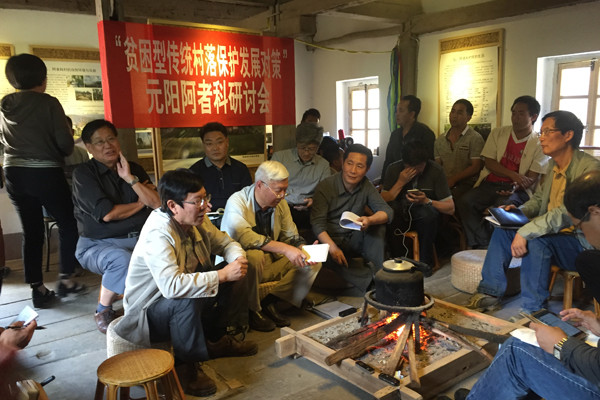
Zhu Liangwen (fifth from left) discusses the Azheke renovation project at the village in Yuanyang county, Yunnan province, with local officials and village leaders. FU ZHENGHUI/CHINA DAILY
Retiree's efforts have convinced villagers they can improve living standards without demolition, new buildings
Zhu Liangwen, a white-haired retired architecture professor from Kunming University of Science and Technology, is in a race against time to protect traditional houses in Yunnan province.
His efforts to protect Yunnan's Lijiang old town started 16 years before it was listed as a UNESCO World Heritage Site in 1997.
After a magnitude-7 earthquake rocked the town in 1996, Zhu's distribution of handbooks illustrating construction styles and features of local traditional houses proved to be effective in saving the buildings from being damaged in the post-disaster reconstruction.
Yuanyang county invited the 79-year-old to help protect the traditional mushroom shaped houses of the Hani ethnic group. Zhu accepted the invitation, but the task became extremely complex.
Zhu started his work in Yuanyang in early 2013 when the local government was attempting to have the county's Landscape of Honghe Hani Rice Terraces listed as a UNESCO World Heritage Site. The government even went to Laos to buy the twitch grass required for the renovation of the houses, he said.
However, the situation changed in June that year when the local government's application for funds, as part of a nationwide campaign to construct "beautiful villages", was successful.
The Yuanjiang government offered 30,000 yuan ($4,400) to families that built new houses. After just a few months, many of the traditional houses in the county's 82 villages had been demolished to make way for new houses.
"I was astonished, and told the county leaders I was only confident of protecting the traditional houses in two of the villages," Zhu said.
One of the villages Zhu chose was Azheke, where 80 percent of the traditional houses remained due to limited access to the outside world.


















































